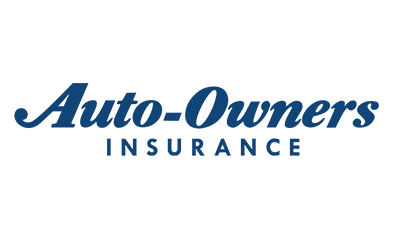Key Components of Car Insurance
Before evaluating policy features from different auto insurance
companies, make sure you understand what each component actually means in order
to make the best comparison possible. Here’s a breakdown of common terms so you
know exactly what you’re getting for your money.
Deductible
Your deductible is the amount you’ll pay for each claim
before the insurance company pays for an issue. It’s important to know this
number, because you’re responsible for paying this amount when some kind of
incident damages your vehicle.
The higher the deductible, they more you’ll pay out-of-pocket before you get any extra cash from your insurer.”
Here’s an example.
If you get into an accident and your car has $1,000 in
damages, you’ll be responsible for a portion of that through your deductible.
Say your deductible is $500. You would pay the first $500 and your insurance
company would cover the next $500.
Premium
Your premium is the amount you pay for your car insurance
policy. Payment schedules vary depending on your carrier, and can be either
monthly, quarterly, or annually. Your premium amount depends on several
different factors, including your car’s make and age, your own driving history,
and the breadth of coverage you choose.
Coverage Limit
Another important component of your car insurance policy is
the coverage limit. This is a maximum dollar amount that you’ll be able to
receive for any qualified damage to your car, as well as damage to other
property and people. Once the damages exceed this pre-determined number, you’ll
be responsible for the balance.
Fault Insurance
Depending on which state you live in, your insurance company
may only pay for expenses when you are deemed “at fault.” Other states do not
require the assignment of fault. Do some research to discover if you live in an
at-fault state or a no-fault state so you can fully understand your coverage
details.
How Much Coverage to Get
Clearly, there are a lot of different issues at play when
creating the ideal car insurance policy for your needs. How can you make sure
you’ve actually got the right amount of coverage? Here are some tips to guide
you through the process.
#1: Compare Deductible vs. Premium
The first comparison to look at with any insurance policy is
the amount of your deductible versus the amount of your premium. The lower the
deductible, the higher the premium will be since the insurance company ends up
paying more for each claim you submit. Choose an amount that feels comfortable
for you, then make sure you have the deductible amount in cash savings so you
can pay it when needed.
#2: Consider Comprehensive and Collision Coverage
It’s important to understand the differences between
comprehensive and collision coverage, then pick the policies that make sense to
you. Comprehensive coverage applies when things like hail, fallen tree limbs,
or vandalism cause damage to your car. Collision coverage covers accidents on
the road, even if another driver is at fault and doesn’t have their own
insurance policy to pay for your repairs.
In most cases, both types of coverage are equally important.
Otherwise, you’ll receive no financial help if one of these common events
happens in your life.
#3: Check if Extended Coverage is Worth It
Many auto insurance companies also offer extended coverage,
which can give you more financial padding in case of a major incident with your
car. Oftentimes, however, you may be better off padding your own financial
cushion than making these extra payments to your carrier.
How Claims and Payout Work
When you do find yourself in some sort of car accident, no
matter whose fault it is, you’ll need to navigate the claims process in order
to receive payout on your vehicle’s damage.
If another driver is involved, you should exchange insurance
information to get the ball rolling. Some states also require that you call the
police to the scene of any accident, no matter how small it may be. This allows
you to have the opinion of a third party to help narrate the sequence of
events.
You’ll then need to meet with an insurance adjuster to
assess the damage to the vehicle and the estimated cost of repairs. Once all
involved parties agree on the costs, your insurance company may use one of
these methods for distributing money and facilitating the repairs:
- Send you to an authorized
auto repair shop within their network
- Let you take your car to
your preferred mechanic
- Service your car at their
own repair center (for larger auto insurance companies)
When the work is completed, your insurance company remits
payment either to you or directly to the repair company. But first, they’ll subtract
your deductible amount, which you’ll need to pay yourself.
If your insurer doesn’t work directly with a repair company
and you own your vehicle outright, you may be able to keep the insurance money
and forego making the repair. While you probably don’t want to do this if
there’s a serious mechanical issue with your vehicle, some people would rather
keep the cash than pay for cosmetic repairs, such as a dented bumper. Also
remember that you’ll only receive cash if the repair amount is above your deductible.
Frequently Asked Questions
How can you save on your car insurance?
There are many discounts available to help you save on your insurance policy. These include good credit, low mileage, comparing offers from different companies, bundling multiple insurance products, and raising your deductible.
When should you drop your full coverage?
Once your car hits a certain age or level of condition, you may consider dropping your full coverage. If your deductible is more than 10% of the vehicle’s value, for example, it might be time to switch to liability. Alternatively, look at your own finances and determine if you could afford to replace your car without getting any money from your insurance company.
What is GAP insurance?
Guaranteed Auto Protection (GAP) insurance, offers financial protection when you have an auto loan. In case of a total loss of the vehicle, your basic insurance policy only covers your car’s current market value. But if you financed a new car, your loan balance might be higher. GAP insurance pays off the balance so you’re not in debt over a car you can’t drive anymore.
Do you have to get car insurance?
Yes, auto insurance is required in every state, but each state has its own law on the minimum amount of coverage you need. If you don’t meet this minimum, you’ll pay a hefty fine each year since you’re putting others at risk of not getting reimbursed if your cause damage to them or their vehicle with your own car.
Get the Best Car Insurance Today
It’s smart to give your insurance policy a quick check-up to get the best coverage at the best price. Get a quote now!
by Lauren Ward
Personal Finance Writer
Lauren Ward is a personal finance writer with nearly ten years of experience covering topics like loans, credit, and real estate. She lives in Virginia with her husband and three children.



